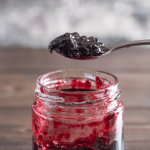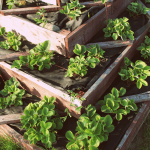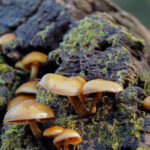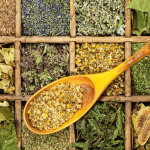Winter-Resilient Plants for Sunken Hugelkultur Beds
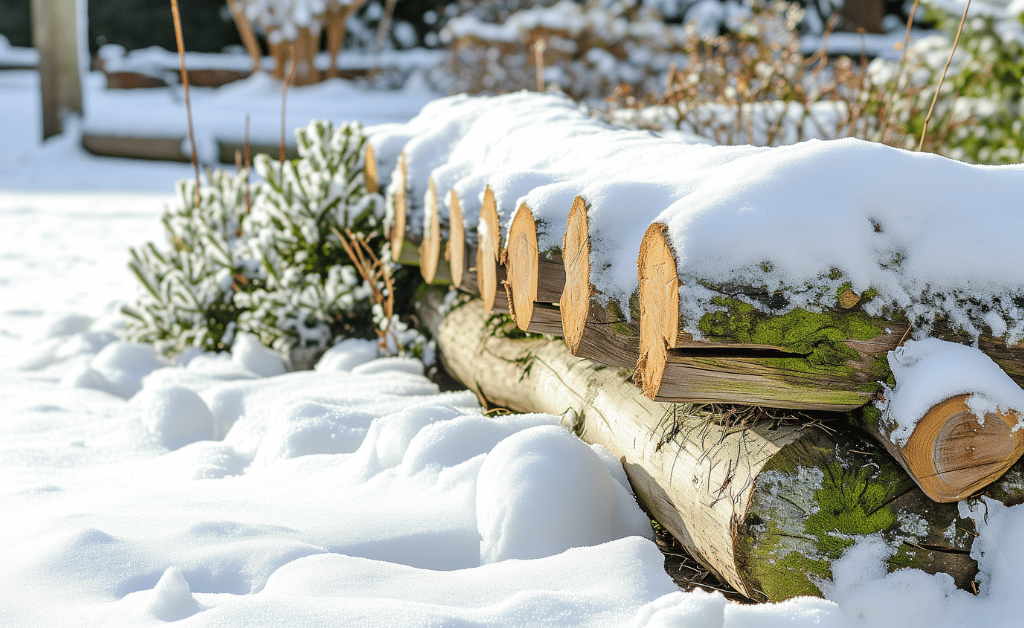
Hugelkultur, a permaculture technique with roots in traditional European agriculture, is a method of creating fertile and efficient garden beds. Essentially, it involves piling up logs, branches, leaves, grass clippings, straw, cardboard, and other compostable biomass, then covering them with soil. Over time, the wood decomposes, releasing nutrients and creating a rich, aerated bed perfect for plant growth. This self-sustaining approach to gardening not only recycles organic waste but also improves soil fertility and water retention. To understand the basics and the philosophy behind this sustainable gardening method, a comprehensive explanation can be found at What is Hugelkultur?.
Building on this foundation, sunken hugelkultur beds represent a variation tailored for colder climates, like those in USDA Zone 7 and Scandinavian regions. These beds are unique in that they are dug into the ground, differing from the more commonly known raised hugelkultur beds. The key benefit of this approach lies in its ability to protect plant roots from extreme cold temperatures. This feature is particularly crucial in regions where conventional raised beds are prone to freezing. Understanding and utilizing sunken hugelkultur beds can significantly enhance winter gardening, enabling a greater diversity of plants to endure and thrive even under challenging conditions.
This article will explore the potential of sunken hugelkultur beds for nurturing winter-resilient plants. We’ll examine how the distinctive microclimate created by these beds can support a range of plants that might otherwise struggle in raised beds during the colder months. Our goal is to extend beyond basic survival; we aim to demonstrate how sunken beds can contribute to a productive and sustainable winter garden, echoing the principles of permaculture and ecological stewardship.
Drawing from a blend of traditional knowledge and modern gardening experiences, this piece is crafted for gardeners and environmental enthusiasts grappling with the nuances of winter gardening. It’s about leveraging the protective and nurturing qualities of sunken hugelkultur beds to not only prolong the growing season but also to enhance the ecological balance of local ecosystems. By delving into this topic, we provide practical guidance for those seeking to optimize their winter gardening strategies in colder climates, echoing the themes discussed in our article on sustainable gardening in Norway.
Understanding Sunken Hugelkultur Beds
The Basics of Sunken Hugelkultur Beds
Sunken hugelkultur beds, an innovative twist on traditional hugelkultur methods, are especially advantageous in certain climatic conditions. These beds involve burying organic materials like wood, leaves, and compost in a trench, creating a unique environment for plant growth.
Construction Process: 1.
- Digging the Trench: This step is about preparing the foundation of the sunken bed. It involves excavating a trench in the ground. The depth of this trench is typically around 30-60 cm (1-2 feet), but it can vary depending on specific garden needs and conditions. This initial digging is crucial as it sets the stage for the subsequent layering of organic materials.
- Layering Materials: After digging the trench, the next step is to fill it with organic materials. This usually starts with larger logs placed at the bottom of the trench, followed by progressively smaller woody debris, such as branches and twigs. On top of these, gardeners add compostable materials like leaves, grass clippings, and kitchen scraps. This layering mimics natural processes found in forest environments, where organic matter decomposes over time to enrich the soil.
- Covering with Soil: The final step in constructing a sunken hugelkultur bed is to cover the layered organic materials with soil. This soil can be the same soil that was initially removed to dig the trench or a mix of soil and compost. Covering the organic materials helps in initiating the decomposition process and prepares the bed for planting.
Sunken hugelkultur beds differ from their raised counterparts in significant ways. Being integrated into the ground, they offer better insulation and moisture retention, making them suitable for areas with colder temperatures or lower rainfall.
| Feature | Sunken Hugelkultur Beds | Raised Hugelkultur Beds |
|---|---|---|
| Location | Below ground level | Above ground level |
| Thermal Insulation | Higher, as soil insulates the organic matter | Lower, more exposed to air temperature |
| Moisture Retention | Enhanced due to lower evaporation rates | Moderate, dependent on external factors |
| Suitability | Ideal for colder and drier climates | Better for wetter climates with ample rainfall |
| Depth/Height | Typically 30-60 cm (1-2 feet) deep | Often about 60 cm to 1.2 m (2-4 feet) high |
Temperature Regulation and Root Protection in Sunken Beds
The design of sunken hugelkultur beds inherently provides superior insulating properties compared to raised beds. This insulation is a key factor in their effectiveness, especially in regions with cold winters.
- Natural Insulation Mechanism: The primary insulating factor in sunken beds is the surrounding earth. Soil is a natural insulator, and when beds are sunken, the earth’s mass helps regulate the temperature of the bed. This means that the extreme cold of winter is less likely to penetrate the soil, protecting the root systems of plants.
- Stability in Temperature Fluctuations: Unlike above-ground beds, which are more exposed to the air and can experience significant temperature swings, sunken beds are more stable. This stability is crucial during nighttime when temperatures can drop sharply. The consistent temperature in sunken beds ensures that plants are not stressed by these fluctuations.
- Depth Factor: The depth of the trench in sunken hugelkultur beds plays a role in insulation. A deeper trench means more soil insulation, which can be particularly beneficial in very cold climates. However, the depth should be balanced with the type of plants grown and the overall garden design.
- Microclimate Creation: Sunken beds can create a microclimate within the garden. The warmer soil temperatures can lead to earlier thawing in the spring, extending the growing season. This microclimate can be particularly advantageous for starting cold-sensitive plants earlier in the season.
- Moisture Retention and Insulation: In addition to temperature insulation, the soil in sunken beds also helps in retaining moisture. In colder climates, where dry conditions can accompany winter months, this can be critical. The retained moisture, along with the warmth, aids in the decomposition process of organic matter within the bed, which in turn generates some heat, further insulating the bed.
By understanding and leveraging these insulating properties, gardeners can significantly improve the survival rate and health of their plants during winter, making sunken hugelkultur beds an excellent choice for cold-climate gardening.
Benefits for Root Health in Sunken Hugelkultur Beds
The design of sunken hugelkultur beds offers several benefits for root health, particularly in challenging climates. These benefits stem from the unique environmental conditions created within these beds.
- Protection from Freezing Temperatures: One of the primary advantages of sunken beds is the protection they offer against freezing temperatures. In raised beds, roots are more exposed to cold air and are at a higher risk of freezing. Sunken beds, being insulated by the surrounding earth, maintain a warmer soil environment, which is less likely to drop to damaging temperatures. This warmth is crucial for the survival of plant roots during severe winters.
- Enhanced Root Development: The consistent temperature and moisture levels in sunken beds encourage healthy root development. Roots are more likely to spread and grow deeper in search of nutrients, leading to stronger, more resilient plants. This robust root system is essential for overall plant health, particularly in perennials that need to survive through multiple seasons.
- Reduced Stress on Plants: Fluctuating temperatures can stress plants, impacting their growth and health. The stable environment of sunken beds minimizes this stress, allowing plants to focus their energy on growth rather than surviving harsh conditions.
- Improved Nutrient Uptake: The decomposing organic matter in sunken hugelkultur beds enriches the soil with nutrients. Healthier soil means healthier roots, and healthier roots are more efficient at nutrient uptake. This improved nutrition further strengthens the plants, making them more capable of withstanding winter conditions.
By offering a stable, nurturing environment, sunken hugelkultur beds significantly contribute to the health and resilience of plant roots. This is particularly beneficial in colder climates, where maintaining healthy roots is key to successful winter gardening.
Advantages of Sunken Beds for Winter Gardening
Sunken hugelkultur beds offer several distinct advantages for winter gardening, making them a valuable choice for gardeners in colder regions.
- Stable Microclimate Creation: The most significant advantage of sunken beds is their ability to create and maintain a stable microclimate. This is primarily due to the insulating properties of the surrounding earth, which helps in maintaining a consistent soil temperature and moisture level. This stability is crucial during the cold months, as it promotes a more favorable environment for plant growth and survival, even when above-ground conditions are harsh.
- Enhanced Soil Fertility from Decomposition: As organic matter within the beds decomposes, it enriches the soil with essential nutrients. This process is particularly important in winter, when plant growth generally slows down. The enriched soil in sunken beds ensures that plants have access to the nutrients they need to thrive, despite the lower temperatures.
- Optimal Water Retention: Sunken beds are particularly effective in retaining moisture. In colder climates, especially those with dry winters, maintaining adequate soil moisture can be challenging. The design of sunken beds helps to minimize water evaporation and retains moisture within the soil, reducing the need for frequent watering and ensuring that plants have access to the water they require.
- Support for a Diverse Range of Plants: The conditions in sunken hugelkultur beds allow for a wider variety of plants to be grown successfully in winter. This includes not only traditional winter-hardy varieties but also some plants that might struggle in the colder temperatures of raised beds.
- Sustainable and Eco-Friendly: Sunken hugelkultur beds align well with sustainable gardening practices. By using on-site natural materials and reducing the need for external inputs like fertilizers and excessive watering, these beds contribute to an eco-friendly gardening approach. They also support the principle of mimicking natural processes, enhancing the overall health and biodiversity of the garden ecosystem.
Incorporating sunken hugelkultur beds into a winter garden can lead to significant improvements in plant health and yield. Their ability to create a favorable growing environment, even in the coldest months, makes them an invaluable tool for gardeners aiming to extend their growing season and enhance the sustainability of their gardens.
Adapting Sunken Beds to Various Climates
The effectiveness of sunken hugelkultur beds can be maximized by tailoring their design and management to local climate conditions. Here’s an expanded look at how they can be adapted for various climates, along with some real-world examples.
- Customizing to Local Environmental Conditions: The design of a sunken bed should take into account local factors such as soil type, average precipitation, and temperature ranges. In areas with heavy clay soil, for instance, incorporating more porous materials like sand or compost can improve drainage. Conversely, in sandy soils, adding organic matter can enhance water retention.
- Adjusting for Precipitation Levels: In regions with high rainfall, designing sunken beds with adequate drainage is crucial to prevent waterlogging. This might include creating a slight slope or incorporating drainage channels. In contrast, in drier climates, deeper beds can help retain moisture.
- Temperature Considerations: In very cold regions, deeper beds can provide better insulation for the root systems. In milder climates, shallower beds may suffice, and the focus might shift to maximizing sun exposure.
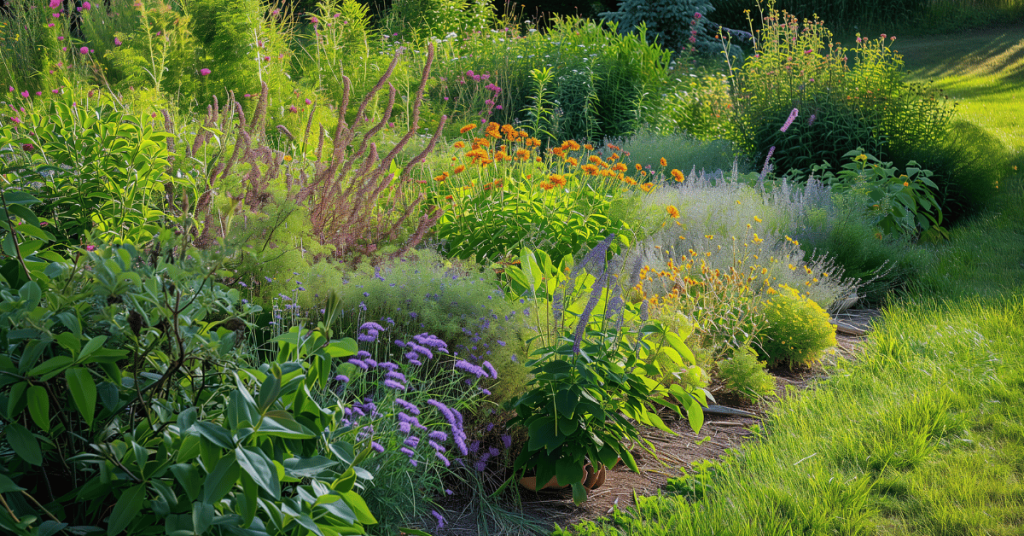
Real-World Examples:
- Scandinavian Climates (Cold and Wet): In Norway, gardeners have successfully used sunken hugelkultur beds to grow a variety of cold-hardy vegetables and perennials. The beds are designed with deeper trenches and a mix of local wood and organic matter, providing excellent insulation during long, cold winters.
- Mediterranean Climates (Mild and Dry): In parts of California, where summers are dry and winters are mild, sunken beds are adapted to maximize water retention. Gardeners often incorporate a thick layer of mulch and use drought-tolerant plants to make the most of the beds’ moisture-preserving qualities.
- Continental Climates (Varied/Seasonal): In regions like the Midwest of the United States, where temperatures can vary greatly between seasons, sunken beds are used with a diverse range of organic materials. These beds are often shallower, allowing for quicker warming in the spring, and are strategically placed to maximize sun exposure.
| Climate Type | Key Considerations for Sunken Beds | Examples |
|---|---|---|
| Cold and Wet | Deep trenches, good insulation, focus on cold-hardy plants. | Norway: Growing cold-hardy vegetables and perennials. |
| Cold and Dry | Deep beds for moisture retention, use of moisture-retaining materials. | High mountain regions: Cultivating root crops and native shrubs. |
| Mild and Humid | Moderate depth, improved drainage. | UK and similar climates: Growing a variety of herbs and leafy greens. |
| Varied/Seasonal | Flexible design, diverse organic materials, strategic placement for optimal sun exposure. | Midwest USA: Adapting to seasonal temperature changes with a mix of plants. |
By understanding these considerations and learning from real-world examples, gardeners can effectively adapt sunken hugelkultur beds to their local conditions, enhancing the resilience and productivity of their gardens in various climates.
Challenges of Winter Gardening in Sunken Hugelkultur Beds
Winter gardening presents a unique set of challenges, especially in climates where temperatures drop significantly and sunlight is scarce for extended periods. Sunken hugelkultur beds offer a solution to some of these challenges, yet they also have their own set of considerations. Understanding these challenges is crucial for successful winter gardening.
Temperature Extremes and Soil Freezing
- Impact on Plant Growth: One of the most significant challenges of winter gardening is the extreme cold, which can halt plant growth and even kill sensitive species. The soil in raised beds is particularly vulnerable to freezing, but sunken beds, with their insulating earth walls, mitigate this risk to some extent.
- Managing Soil Temperature: To further protect against soil freezing, gardeners can use strategies such as mulching with straw or leaves, which add an extra layer of insulation. Another method is to cover the beds with clear plastic sheeting, creating a greenhouse effect that traps heat.
Limited Sunlight
- Reduced Photosynthesis: Shorter days and lower angles of sunlight result in reduced photosynthesis, slowing plant growth. This is a challenge for all forms of winter gardening, including sunken beds.
- Maximizing Light Exposure: To combat this, positioning the beds to receive maximum sunlight is crucial. Choosing plants adapted to lower light conditions can also be beneficial. In some cases, artificial lighting like grow lights can supplement natural light.
Moisture Management
- Overwatering Risks: In winter, plants need less water due to slower growth and cooler temperatures. Overwatering can lead to root rot and other issues. Sunken beds naturally retain more moisture than raised beds, which can be both an advantage and a challenge.
- Balancing Soil Moisture: It’s important to monitor and manage soil moisture levels carefully. Using a soil moisture meter can be helpful. Adjust watering schedules based on weather conditions and plant needs.
Plant Dormancy and Growth Cycles
- Understanding Dormancy: Many plants enter a dormant state in winter, a natural survival mechanism. This can be mistaken for dying, but it’s a normal part of the plant’s lifecycle.
- Managing Dormant Plants: Knowing which plants are dormant and which are dead is important for winter garden maintenance. Providing the right care during dormancy, such as reduced watering and protecting the plant from extreme cold, is key.
Frost Heaving
- Soil Expansion and Contraction: Frost heaving occurs when soil repeatedly freezes and thaws, leading to expansion and contraction. This can push plants out of the ground, damaging their root systems.
- Preventing Frost Heaving: Adequate mulching can help maintain a more consistent soil temperature and reduce the risk of frost heaving. Choosing plants that are well-suited to the local climate can also minimize this issue.
Pest and Disease Management
- Winter Pests: While many pests are less active in winter, some, like voles and mice, can be more problematic. These rodents can burrow into sunken beds in search of food and shelter.
- Disease Considerations: Fungal diseases can also be a concern in the moist, cool conditions of winter. Good air circulation and proper plant spacing are essential to prevent these issues.
Nutrient Availability
- Reduced Microbial Activity: Cold temperatures slow down microbial activity in the soil, leading to reduced nutrient availability.
- Supplementing Nutrients: Incorporating well-composted material into the soil before the onset of winter can help ensure that plants have access to the nutrients they need.
Gardening Ergonomics
- Physical Strain: Working in a winter garden can be more physically demanding due to the cold and the need for additional layers of clothing.
- Ergonomic Practices: Using tools designed for comfort and efficiency can help reduce strain. It’s also important to take breaks and avoid overexertion.
Winter gardening in sunken hugelkultur beds requires careful planning and adaptation to the unique challenges presented by the colder months. By understanding these challenges and employing strategic solutions, gardeners can successfully cultivate a thriving winter garden.
Selecting Winter-Resilient Plants for Sunken Hugelkultur Beds
Creating a flourishing winter garden in sunken hugelkultur beds requires thoughtful plant selection. This involves considering factors like plant hardiness, root tolerance to cold, and their suitability for the unique conditions of sunken beds. Here, we explore various plant types that are not only resilient in colder months but also contribute to the diversity and beauty of your garden.
Understanding Plant Hardiness
The key to a successful winter garden is choosing plants that can endure your local climate’s harsher conditions. Utilizing the USDA Plant Hardiness Zone Map (or for non-US readers) helps in identifying plants suitable for your specific area. In Zone 7, for instance, plants should be able to tolerate temperatures as low as 0 to 10°F (-18 to -12°C). Sunken hugelkultur beds often provide a slightly warmer microclimate, which can be a boon for a wider variety of plants.
Root Tolerance to Cold
In winter gardening, a critical factor to consider is the sensitivity of plant roots to freezing temperatures. Sunken hugelkultur beds offer an ideal environment for plants that prefer their roots to be protected from the harsh cold. Unlike raised beds or pots, where roots are more exposed to freezing temperatures, sunken beds provide natural insulation. This makes them especially suitable for plants that require a more stable and warmer root environment during winter. Such plants, while they might struggle in raised beds or containers, can thrive in the sheltered conditions of a sunken bed, contributing both beauty and productivity to your garden.
Plants with Winter Interest
The aesthetics of your winter garden matter as much as its productivity. Evergreens, ornamental grasses, and plants with striking bark or winter berries can add texture and color. These plants keep your garden lively and visually appealing, even on the bleakest winter days.
Vegetables and Herbs for Your Winter Garden
Winter gardening isn’t just about enduring the cold; it’s about thriving in it. For an array of vegetables that are particularly suited to the cooler temperatures and soil conditions of sunken beds, explore the detailed insights in our guide on choosing vegetables for hugelkultur beds. Similarly, for herbs that not only withstand winter’s rigors but also add fresh flavors to your winter dishes, our article on selecting herbs for hugelkultur beds offers valuable guidance.
Aronia and Haskap Berries: Ideal for Sunken Beds
Some plants are particularly well-suited to the conditions of sunken hugelkultur beds. For instance, Aronia and Haskap berries, detailed in our Aronia and Haskap Berries plant profiles, can be great choices. These berries not only endure the cold but their root systems adapt well to the changing conditions of decomposing hugel beds.
Strategic Planting for a Diverse Winter Garden
In planning your winter garden, consider the layout and composition of your sunken beds. Incorporate a mix of vegetables, herbs, and ornamental plants for a garden that is both productive and aesthetically pleasing. Remember to account for the changing conditions as the organic materials in your beds decompose over time. This dynamic environment can be a perfect nurturing ground for a variety of winter-hardy plants.
The right plant choices can transform your sunken hugelkultur beds into a vibrant winter garden. By balancing practicality with aesthetics, you can create a space that is not only a haven for biodiversity but also a source of joy and sustenance during the colder months.
Conclusion
As we’ve explored, sunken hugelkultur beds present a unique and effective solution for winter gardening, especially in climates where cold temperatures pose a significant challenge. The key to harnessing the full potential of these beds lies in thoughtful plant selection and understanding the specific needs of different plants in the colder months.
Sunken beds, with their natural insulation, create a stable microclimate that is particularly beneficial for plants sensitive to root freezing. By choosing the right plants – those that require protection from extreme cold or have specific root warmth needs – gardeners can turn these beds into winter havens. The inclusion of plants like Aronia and Haskap berries, which are well-suited to the conditions of sunken beds, along with herbs and vegetables adapted to cooler temperatures, can lead to a productive and vibrant winter garden.
Furthermore, by integrating larger trees and shrubs nearby, such as chestnuts and plums, gardeners can take advantage of the nutrient-rich environment created by the decomposing organic matter in the beds. This strategic placement not only protects the structural integrity of the beds but also leverages their benefits for the overall garden ecosystem.
In conclusion, sunken hugelkultur beds offer a sustainable and efficient approach to winter gardening, allowing for a diverse range of plant cultivation. With proper planning and plant selection, these beds can provide a lush, productive garden space even in the coldest months, embodying the principles of resilience and adaptability that are at the heart of permaculture and sustainable gardening practices.
Maximize Gardening Success in Dry Climates with Hugelkultur
In regions where water is scarce and the climate leans towards the arid side, hugelkultur beds can be a game-changer for your gardening endeavors. Surprisingly, these beds can be even more beneficial in dry climates, offering an innovative approach to water conservation and soil enrichment. If you’re navigating the challenges of a drier environment, discover how hugelkultur can transform your gardening experience. Dive deeper into this topic and uncover the secrets of effective dry climate gardening with hugelkultur in our in-depth article: “How Useful Would a Hugelkultur Bed Be in a Very Dry Climate?“.
Unlock the potential of hugelkultur in your garden, no matter the climate, and join a community of gardeners reaping the rewards of this sustainable and efficient gardening technique.

